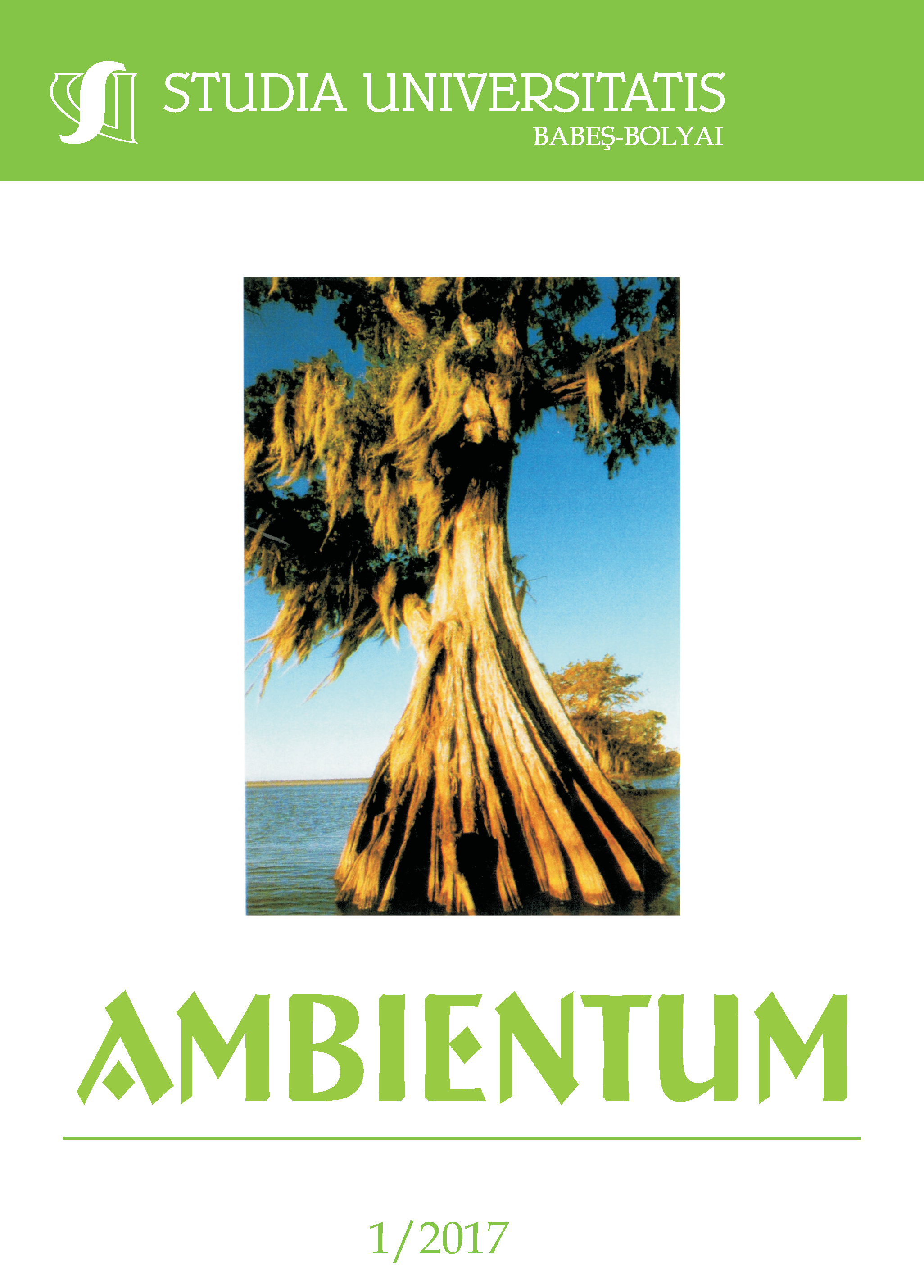DETERMINATION OF THE CHLORINATED PESTICIDES RESIDUES IN SOILS TREATED WITH MODERN PESTICIDES
DOI:
https://doi.org/10.24193/subbambientum.2017.1.06Keywords:
Organochlorine pesticides, modern agriculture, soil.Abstract
The potential for pesticide soil contamination is a worldwide concern, due to the intensive use of organochlorine compounds. The use of pesticides has offered significant economic benefits by increasing the production of food and preventing different form of diseases, therefore their use has affected not only the health of human population, but the environment as well. Organochlorine pesticides like Aldrin, Chlordane, DDT, Dieldrin, Endrin and Heptachlor have been banned after the 2001 Stockholm convention. That is why many jurisdictions try to control human exposure by specifying the soil’s maximum allowable concentration. 12 soil samples were collected from different parts of Romania, aiming to evaluate the organochlorine concentration in order to study if the soils have been treated with this type of pesticides. Each sample was dried, extracted with hexane by ultrasonication and analyzed by GC-ECD. The results of the analyzed samples showed low concentrations, ranging between 28.36 and 73.19 μg/kg. The most identified compounds were Alpha HCH, Beta HCH, Heptachlor, Aldrin, Heptaclhor epoxide, trans-Clordane, Endosulfan I, 4,4` DDE and Dieldrin+Endrin.References
Abhilash P.C., Singh N., 2009, Pesticide use and application: an Indian scenario. Journal of Hazardous Materials, 165, pp. 1-12.
Afful S., Anim A., Serfor-Armah Y., 2010, Spectrum of organochlorine pesticide residues in fish samples from the Densu Basin. Research Journal of Environmental and Earth Sciences, 2 (3), pp. 133-138.
Aiyesanmi A.F., Idowu G.A., 2012, Organochlorine pesticides residues in soil of cocoa farms in Ondo State Central District, Nigeria. Environment and Natural Resources Research, 2 (2), pp. 65-73.
Belta G.D., Likata P., Bruzzese A., Naccarri C., Trombetta D., Turco V.L., Dugo C., Richetti A., Naccari F., 2006, Level and congener pattern of PCBs and OCPs residues in bue-fin tuna (Thunnus thynnus) from the straits of Messina (Sicily, Italy). Environmental Intternational, 32, pp. 705-710.
Dai J.Y., Chen L., Zhao J.F., Ma N., 2006, Characteristics of sewage sludge and distribution of heavy metal in plants with amendment of sewage sludge. Journal of Environmental Sciences, 18 (6), pp. 1094-1100.
Ene A., Bogdevich O., Sion A., 2012, Levels and distribution of organochlorine pesticides (OCPs) and polycyclic aromatic hydrocarbons (PAHs) in topsoils from SE Romania. Science of the Total Environment, 439, pp. 76-86.
Megharaj M., 2002, Heavy pesticide use lowers the soil health. Farming Ahead, 121, pp 37–38.
Official Monitor of Romania. Reference values for traces of chemical elements in soils. O.M. No. 756/03.11.1997: Monitorul Oficial al Romaniei (Partea I, No. 303 bis/1997); 1997 (in Romanian).
Raposo Jr. L.J., Re-Poppi N., 2007, Determination of organochlorine pesticides in ground water samples using solid-phase microextraction by gas chromatographyelectron capture detection. Talanta, 72, pp. 1833-1841.
William J., Tagoe L., Drechsel P., Kelderman P., Gijzen H., Nyarko E., 2008, Accumulation of persistence organochlorine contaminants in milk and serum of farmers from Ghana. Environmental Research, 106, pp. 17-26.
Yadav I.C., Devi N.L., Syed J.H., Cheng Z., Li J., Zhang G., Jones K.C., 2015, Current status of persistent organic pesticides residues in air, water, and soil, and their possible effect on neighboring countries: A comprehensive review of India. Science of the Total Environment, 511, pp. 123-137.
Zhang W.J., Jiang F.B., Ou J.F., 2011, Global pesticide consumption and pollution: with China as a focus. Proceeding of the International Academy of Ecology and Environmental Science, 1 (2), pp. 125-144.
Downloads
Published
How to Cite
Issue
Section
License
Copyright (c) 2017 Studia Universitatis Babeș-Bolyai Ambientum

This work is licensed under a Creative Commons Attribution-NonCommercial-NoDerivatives 4.0 International License.





 ISSN (online): 2065-9490 | ISSN (print): 1843-3855 | ISSN-L: 2065-9490
ISSN (online): 2065-9490 | ISSN (print): 1843-3855 | ISSN-L: 2065-9490